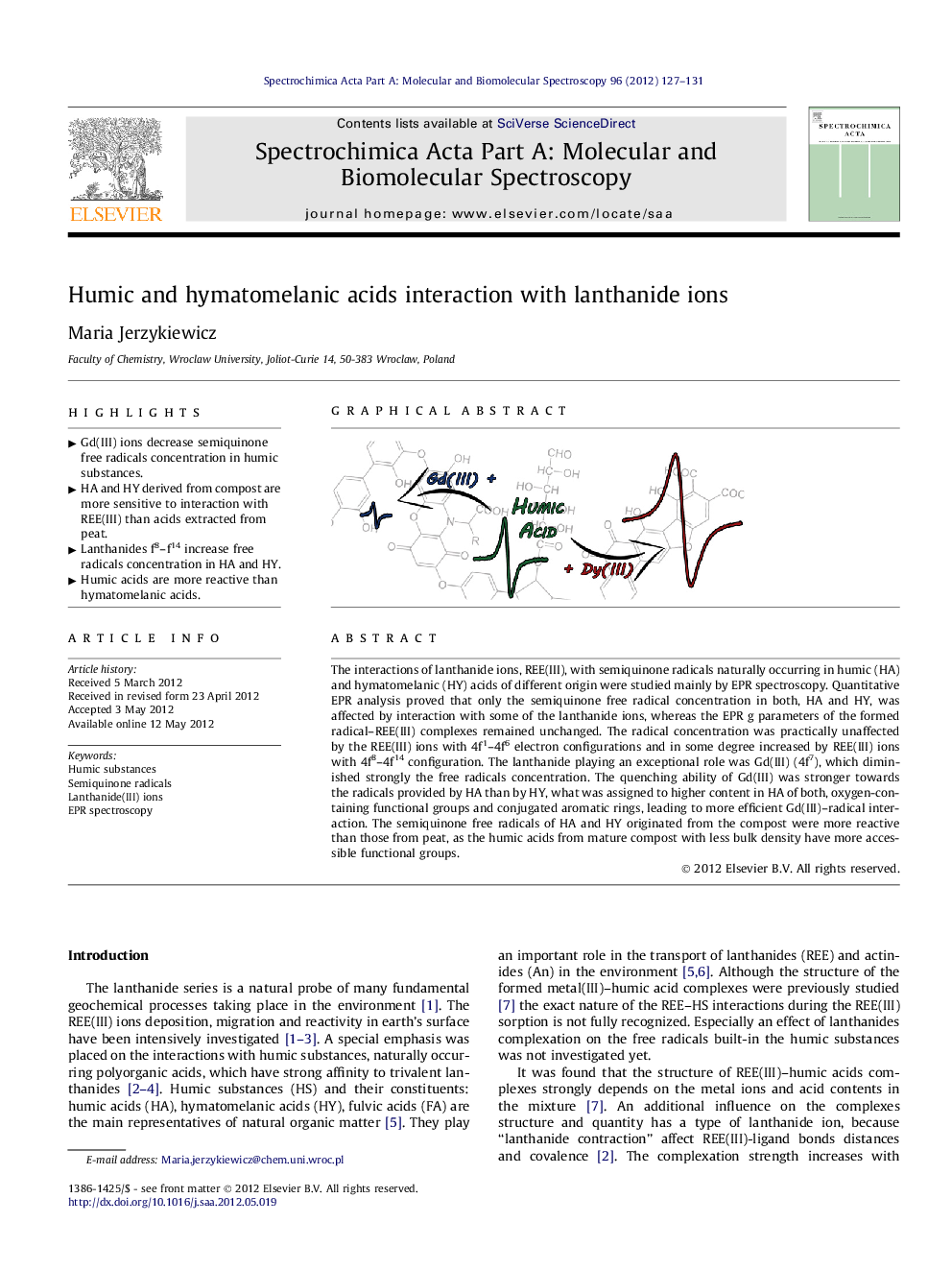| Article ID | Journal | Published Year | Pages | File Type |
|---|---|---|---|---|
| 1234390 | Spectrochimica Acta Part A: Molecular and Biomolecular Spectroscopy | 2012 | 5 Pages |
The interactions of lanthanide ions, REE(III), with semiquinone radicals naturally occurring in humic (HA) and hymatomelanic (HY) acids of different origin were studied mainly by EPR spectroscopy. Quantitative EPR analysis proved that only the semiquinone free radical concentration in both, HA and HY, was affected by interaction with some of the lanthanide ions, whereas the EPR g parameters of the formed radical–REE(III) complexes remained unchanged. The radical concentration was practically unaffected by the REE(III) ions with 4f1–4f6 electron configurations and in some degree increased by REE(III) ions with 4f8–4f14 configuration. The lanthanide playing an exceptional role was Gd(III) (4f7), which diminished strongly the free radicals concentration. The quenching ability of Gd(III) was stronger towards the radicals provided by HA than by HY, what was assigned to higher content in HA of both, oxygen-containing functional groups and conjugated aromatic rings, leading to more efficient Gd(III)–radical interaction. The semiquinone free radicals of HA and HY originated from the compost were more reactive than those from peat, as the humic acids from mature compost with less bulk density have more accessible functional groups.
Graphical abstractFigure optionsDownload full-size imageDownload as PowerPoint slideHighlights► Gd(III) ions decrease semiquinone free radicals concentration in humic substances. ► HA and HY derived from compost are more sensitive to interaction with REE(III) than acids extracted from peat. ► Lanthanides f8–f14 increase free radicals concentration in HA and HY. ► Humic acids are more reactive than hymatomelanic acids.
